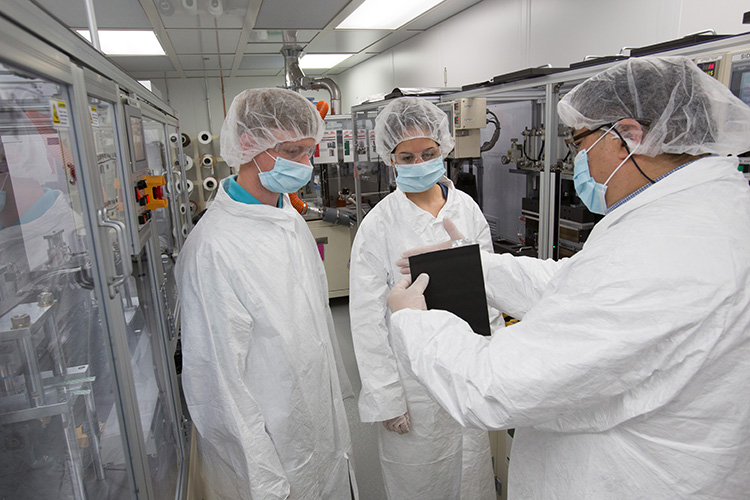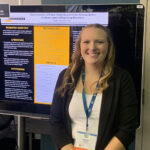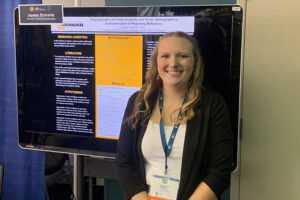In a world facing shortages in energy and water, UWM researchers are focused on tomorrow – building new distribution and conservation technologies that will change the game in our search for a more sustainable future.
This work is already rebooting the economy in Wisconsin, where the energy industry is the No. 1 driver, according to the Midwest Energy Research Consortium. The university’s partnership with Fortune 100 company Johnson Controls Inc., the world’s largest supplier of batteries, has already earned tens of millions of dollars in energy-research grants aimed at developing batteries for next-generation vehicles.
At no time since the first Model T rolled off the manufacturing assembly line in 1908 has vehicle technology evolved as quickly as it is today.
“It wasn’t that long ago when the only electric vehicles that existed were golf carts,” said Deyang Qu, Johnson Controls Endowed Professor in the College of Engineering and Applied Sciences. “Now, you have the pure electric vehicles, the hybrid plug-in and the ‘micro-hybrid.’”
With new car technology comes a need for advanced batteries capable of powering the vehicles. But one battery does not fit all, Qu said. At Johnson Controls, the research is focused on two kinds of vehicle batteries: lead-acid batteries, existing technology that’s being upgraded to enable higher vehicle performance; and lithium-ion, which can be recharged more quickly than their lead-acid counterpart.
Qu is heading research at both UWM and UW-Madison as part of a unique partnership between Wisconsin’s two public research universities and Johnson Controls. The company’s multi-million dollar investment supports the endowed professorship, graduate student education and research laboratories at both universities. Faculty members, students and Johnson Controls scientists work side-by-side in two labs at UWM’s College of Engineering & Applied Science. One is a “dry lab” with the right conditions to test-manufacture next-generation lithium-ion batteries. It’s the only one of its kind at a North American university.
Results are promising. Since 2012 work done in these labs has attracted $35 million in federal grants for energy storage research and several UWM grads have been hired by Johnson Controls.
“We want to make sure there is a return on this investment that benefits the economy of Wisconsin,” Qu added.
This includes turning out skilled engineers with coveted expertise in the highly charged field of battery research.
“Because of this collaboration Johnson Controls is on our campus all year round. Students can be working on a real-world project as part of their education. And we can tailor our curriculum to take advantage of those experiences to give our students the maximum benefit.”
Qu came to Milwaukee from University of Massachusetts Boston, where he built a research program in energy storage systems for electric vehicles and smart-grid technology. Prior to 2005, he worked as a research scientist for private industry, including at Wisconsin-based Rayovac Corporation (now called Spectrum Brands). In his new position, Qu has three goals:
- Provide a roadmap for Johnson Controls in the development of new technologies, including the next generation of lithium-ion batteries.
- Help the company improve the capability and performance of current lead-acid battery technology.
- Create a talent pipeline for the industry.
This college-to-career pipeline is integral to the partnership, said MaryAnn Wright, vice president of engineering and product development at Johnson Controls Power Solutions.
“Today’s vehicle batteries are required to do much more than simply start your car. Recruiting and retaining highly skilled engineers who are interested in commercializing evolving technologies in a sustainable manner is important to Johnson Controls and the entire industry,” Wright said.
Good news for tomorrow’s energy engineers: The automotive industry can’t wait to tap into their expertise. In the next four years, said Qu, the number of cars on the road with gas-saving “start-stop” technology will reach 20 million.
Start-stop technology enables cars to turn off momentarily when they stop, such as at a traffic light. The car then automatically starts up again when the driver releases the break. Virtually standard equipment in Europe, start-stop systems improve fuel economy and emissions by as much as 5 percent over conventional internal combustion engine technology. The system is expected to be a standard feature on all American-made cars in the next decade.
Fuel-saving technologies like start-stop demand better performance from current lead-acid battery technology.
“Lead-acid technology, the benchmark for performance in automotive applications can be further improved to drive the emissions and fuel economy performance of start-stop and take micro-hybrid vehicles to the next level,” Qu said. “What we’re doing now is optimizing this proven technology to fit a broad range of applications.”
Innovations in vehicle batteries don’t happen over night, he says. It took many decades to turn lithium-ion batteries into a product.
“But our research is creative, exciting, it’s on the right track,” Qu said. “It can keep you awake at night!”







